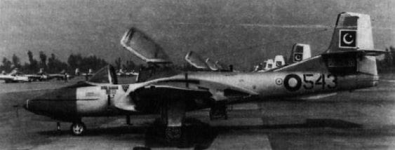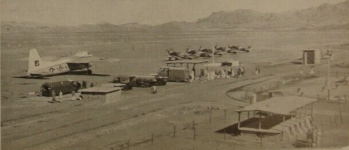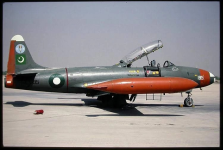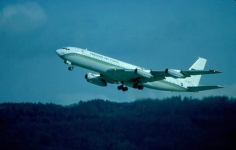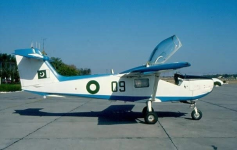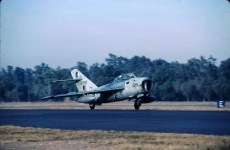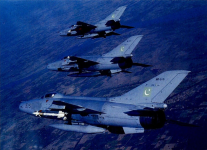ghazi52
THINK TANK: CONSULTANT
- Mar 21, 2007
- 117,031
- 167,201
- Country of Origin

- Country of Residence

- Thread starter
- #76
K-8 KARAKORUM
(1994 till date)
The Hongdu JL-8 (or Nanchang JL-8), also known as the K-8 Karakorum, is a two-seat intermediate jet trainer and light attack aircraft built in joint-cooperation between the China (China Nanchang Aircraft Manufacturing Corporation) and Pakistan's (Pakistan Aeronautical Complex).
The first prototype was built in 1989, with the first flight taking place on 21 November 1990.
Pakistan Air Force received fourteen K-8 trainers in 1994, after which it decided to order 75 more to replace its fleet of
Cessna T-37 trainers. The latest development in the K-8 family is the K-8P version, which currently is operated by the Pakistan Air Force. K-8P has an advanced avionics package of integrated head-up displays and multi-function displays (MFD), MFD-integrated GPS and Instrument Landing System (ILS) / Tactical Air Navigation (TACAN) systems.
The People Liberation Army Air Force (PLAAF) received its first six K-8 trainers in 1998. Later upgrades to the Chinese model included an indigenously manufactured Chinese engine. The PLAAF is anticipated to continue adding the trainer to its fleet in order to replace older trainers that are now obsolete, such as the JJ-5 (FT-5).
Other nations have shown interest in the trainer and it now also serves in the air forces of Egypt, Sri Lanka and Zimbabwe. While the plane primarily serves as a trainer, it can also be used in the ground attack or even air combat role when appropriately armed.
In 2008 Venezuela announced the purchase of 18 K-8 aircraft. Currently the K-8 is being marketed by China to the air forces of the Philippines and to Indonesia, for replacing Indonesia's BAE Hawk MK.53 jet trainers. In 2009, the Bolivian government approved a deal to purchase 6 K-8P aircrafts for use in anti-drug operations.
(1994 till date)
The Hongdu JL-8 (or Nanchang JL-8), also known as the K-8 Karakorum, is a two-seat intermediate jet trainer and light attack aircraft built in joint-cooperation between the China (China Nanchang Aircraft Manufacturing Corporation) and Pakistan's (Pakistan Aeronautical Complex).
The first prototype was built in 1989, with the first flight taking place on 21 November 1990.
Pakistan Air Force received fourteen K-8 trainers in 1994, after which it decided to order 75 more to replace its fleet of
Cessna T-37 trainers. The latest development in the K-8 family is the K-8P version, which currently is operated by the Pakistan Air Force. K-8P has an advanced avionics package of integrated head-up displays and multi-function displays (MFD), MFD-integrated GPS and Instrument Landing System (ILS) / Tactical Air Navigation (TACAN) systems.
The People Liberation Army Air Force (PLAAF) received its first six K-8 trainers in 1998. Later upgrades to the Chinese model included an indigenously manufactured Chinese engine. The PLAAF is anticipated to continue adding the trainer to its fleet in order to replace older trainers that are now obsolete, such as the JJ-5 (FT-5).
Other nations have shown interest in the trainer and it now also serves in the air forces of Egypt, Sri Lanka and Zimbabwe. While the plane primarily serves as a trainer, it can also be used in the ground attack or even air combat role when appropriately armed.
In 2008 Venezuela announced the purchase of 18 K-8 aircraft. Currently the K-8 is being marketed by China to the air forces of the Philippines and to Indonesia, for replacing Indonesia's BAE Hawk MK.53 jet trainers. In 2009, the Bolivian government approved a deal to purchase 6 K-8P aircrafts for use in anti-drug operations.
Last edited:

